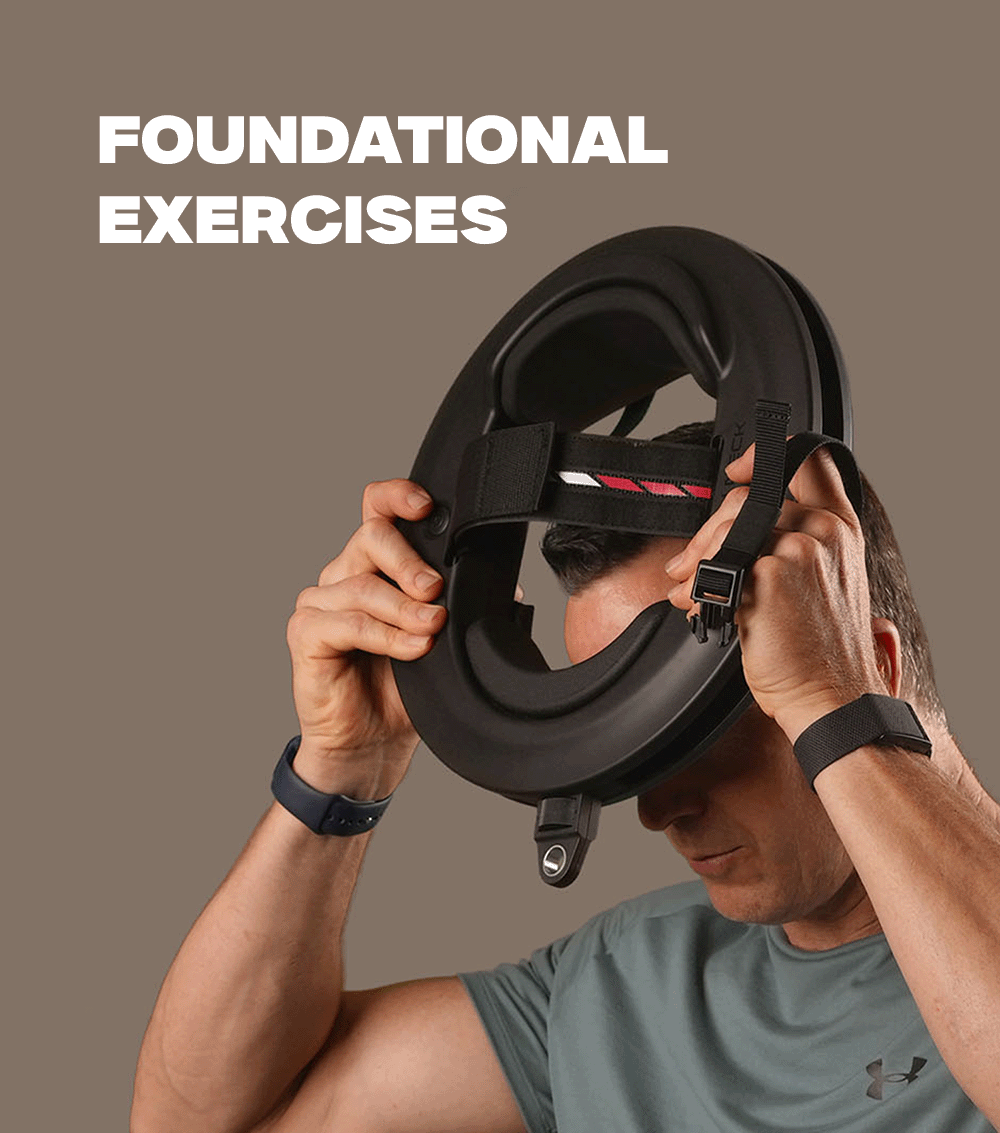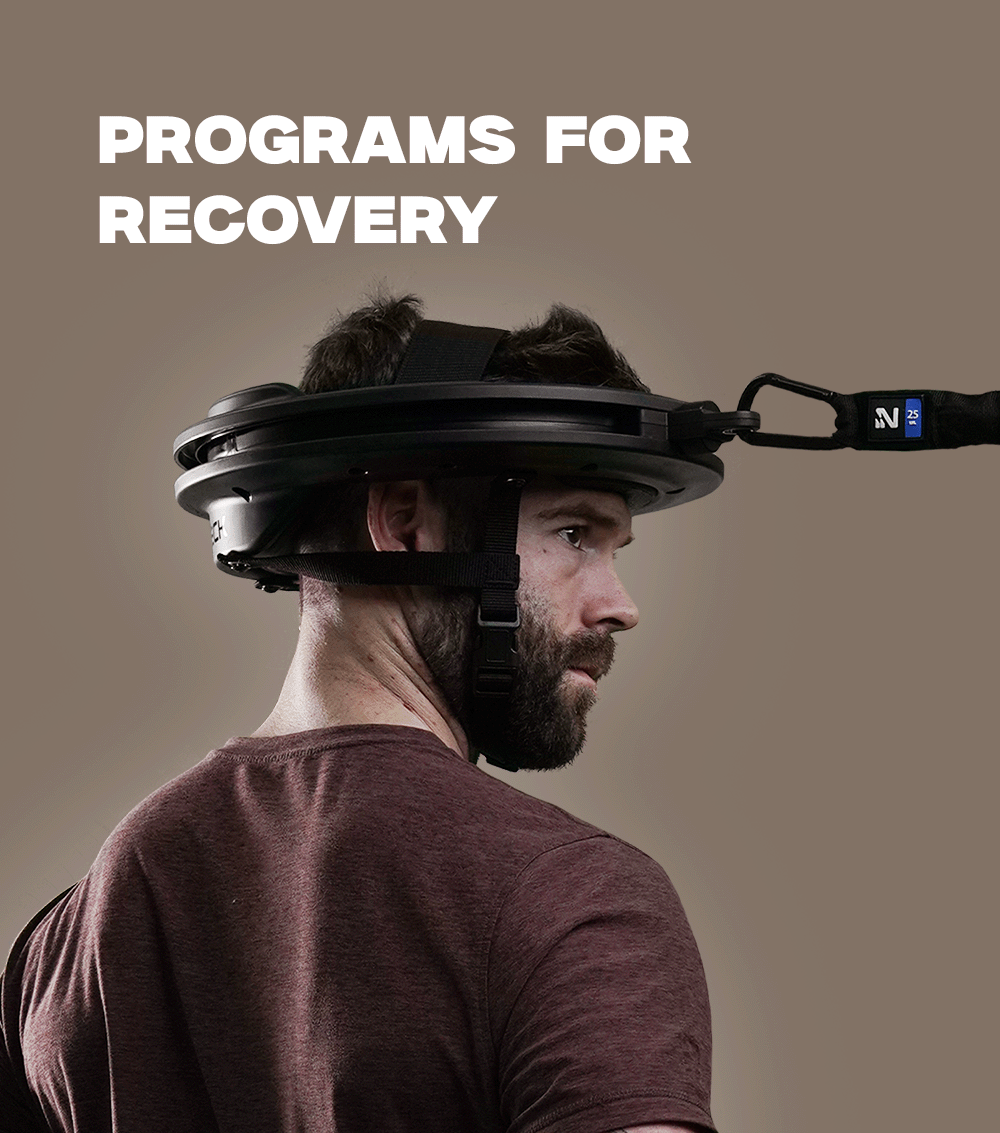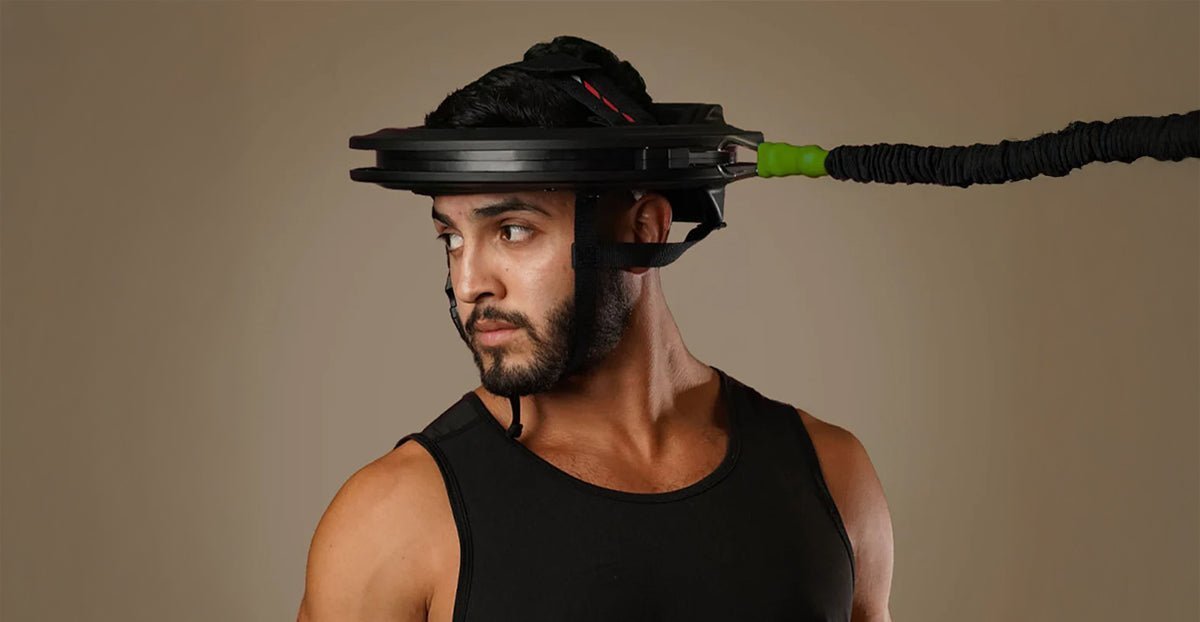The vagus nerve might not be something you think about every day, but it’s one of the most important nerves in your body. It runs from your brain, through your neck, and down to your belly, acting like a superhighway that connects your brain to your organs. When it’s irritated or not working well, it can cause surprising problems like neck pain, stomach issues, dizziness, or feeling tired (Breit et al., 2018; Lladós et al., 2023).
For some people, this irritation shows up as vagus nerve pain, which can feel like discomfort in the neck, throat, or chest and make daily life harder. The good news is there are simple ways to calm the nerve and ease these symptoms (Molero-Chamizo et al., 2022; Chen et al., 2024).
What Is the Vagus Nerve and Why It Matters
The vagus nerve is like a communication line between your brain and many parts of your body, including your heart, lungs, and digestive system. It helps control important functions such as your heartbeat, breathing, and digestion (Prescott et al., 2022; Bonaz et al., 2018).
Think of it as your body’s built-in relaxation helper. When the vagus nerve is working well, it helps your body switch into “rest and digest” mode, keeping stress in check and supporting overall health (Breit et al., 2018; Yuan et al., 2016).
When this nerve gets irritated or overworked, it can affect your body in surprising ways. You might notice neck or throat discomfort, stomach problems, dizziness, or fatigue. That’s why keeping the vagus nerve healthy is key to feeling balanced and calm in everyday life (Browning et al., 2017; Bonaz et al., 2017).
Some of the key functions controlled by the vagus nerve include:
-
Regulating heart rate and blood pressure – helping your cardiovascular system stay balanced
-
Supporting digestion and gut function – aiding nutrient absorption and healthy bowel movements
-
Influencing mood and relaxation – helping reduce stress and promote calm
-
Controlling reflexes such as swallowing and gagging – keeping your body safe and coordinated
- Because the vagus nerve runs directly through the neck, irritation, tension, or dysfunction in this area can affect your whole body. People experiencing vagus nerve issues may notice symptoms ranging from neck pain and difficulty swallowing to digestive upset and anxiety.
Understanding how this nerve works is the first step in recognizing when it’s under strain and learning simple ways to calm it before symptoms interfere with daily life.
Causes of Vagus Nerve Pain
Vagus nerve pain can happen when the nerve is irritated, compressed, or not working properly. Some common triggers include:
- Neck tension or injury – tight muscles or trauma can put pressure on the nerve. Over time, this often comes from weak neck muscles, which reduce stability and increase strain on the cervical spine.(Özel Aslıyüce et al., 2023).
-
Stress or anxiety – Overactive stress responses can affect the nerve’s function, reducing vagal tone and impairing its ability to regulate inflammation and relaxation (Breit et al., 2018; Namgung et al., 2022).
-
Digestive issues - Bloating, reflux, or inflammation can irritate vagal fibers in the gastrointestinal tract, disrupting nerve signaling and contributing to discomfort (Browning et al., 2017; Bonaz et al., 2017).
-
Inflammation or illness – Infections or chronic inflammation (including COVID19–related inflammation) may impact vagal signaling and contribute to autonomic dysfunction (Andersson et al., 2023; Woo et al., 2023).
Symptoms of Vagus Nerve Pain
When the vagus nerve is under strain, it can cause a variety of symptoms. Common signs include:
-
Neck, throat, or chest discomfort
-
Difficulty swallowing or a lump-like sensation in the throat
-
Dizziness, lightheadedness, or feeling faint
-
Fatigue or low energy
-
Digestive problems, such as nausea, bloating, or irregular bowel movements
Understanding these causes and symptoms helps you recognize when the vagus nerve might be stressed and why calming it is important for overall health.
How to Calm Vagus Nerve Pain Naturally
The vagus nerve plays a big role in helping your body relax. Calming it usually means switching on your body’s natural “rest and digest” mode. The good news is that simple, natural methods can help soothe the nerve and restore balance.
1. Deep Breathing Exercises
Slow, diaphragmatic breathing sends a direct signal to the vagus nerve to calm the body (Russo et al., 2023; Johns Hopkins Medicine, 2024).
2. Cold Exposure
Splashing cold water on your face or taking a brief cold shower can trigger the vagus nerve and shift the nervous system into a calmer state (Critical Health Review, 2025; HRA NHS Research, 2024).
3. Humming, Singing, or Chanting
Because the vagus nerve runs through the throat, vibration from your voice can help stimulate and relax it (Purdue University, 2024).
4. Gentle Movement & Stretching
Yoga, neck stretches, and posture exercises help release tension in the muscles surrounding the vagus nerve, reducing pressure and irritation (CedarsSinai, 2023).Adding neck tightening exercises to your routine can further support stability and relieve discomfort.
5. Stress Management & Rest
Daily stress is one of the biggest triggers for vagus nerve discomfort. Practicing mindfulness, meditation, or simply setting aside time to rest can keep your nervous system balanced (Calm Blog, 2025).
These strategies are easy to try at home and often bring quick relief. For longer-term support, strengthening the neck and improving posture can reduce recurring irritation something we’ll explore further in the next section.
How Iron Neck Supports Pain Relief
While calming techniques like breathing and stretching can bring quick relief, addressing the root cause of vagus nerve discomfort often comes down to posture and muscle balance. When the neck and upper back are weak or strained, the vagus nerve can be irritated by constant tension in the surrounding tissues (Özel Aslıyüce et al., 2023; Bonaz et al., 2016).
This is where Iron Neck equipment can play a role. By strengthening the muscles that support the cervical spine and improving overall neck stability, Iron Neck helps:
- Correct posture – Counteracting slouching and forward-head positions that compress nerves. (Sterling et al., 2019; Wu et al., 2020).Following guidance like how to fix bad neck posture ensures better alignment and reduces irritation of the vagus nerve.
-
Reduce muscle tension– Relieving tightness in the neck and shoulders that may irritate the vagus nerve (Peng et al., 2021).
-
Improve mobility and alignment – Making it easier to move freely without triggering pain (Blomgren et al., 2018).
-
Build long-term resilience– So your neck and nervous system are less vulnerable to strain from daily stress or repetitive movements (Park et al., 2024).
Strengthening Neck Health to Ease Vagus Nerve Pain
Iron Neck isn’t a direct cure for vagus nerve pain, but it can be a powerful tool for supporting neck health. When combined with natural calming techniques, it offers a safe, structured way to reduce tension and help the vagus nerve function properly (Bonaz et al., 2016; Breit et al., 2018).
The vagus nerve is one of the body’s most important messengers, influencing everything from heart rate and digestion to mood and relaxation. When it becomes irritated, the effects can ripple across your system, showing up as pain, discomfort, or fatigue (Özel Aslıyüce et al., 2023; Honey, 2025).
Deep breathing, cold exposure, humming, stretching, and mindful rest all help activate the body’s natural relaxation response. Over time, strengthening the neck and improving posture with tools like Iron Neck can reduce muscle tension that contributes to irritation. Persistent or severe symptoms should always be evaluated by a healthcare professional to rule out underlying conditions.Taking care of your neck and nervous system is more than pain management—it’s an investment in your overall health, energy, and quality of life.
FAQs
1. What are the symptoms of vagus nerve dysfunction?
Common symptoms include digestive issues such as bloating and nausea, dizziness during or after activity, irregular heart rate, headaches, anxiety, and trouble relaxing or sleeping. These signs may appear in clusters or shift over time.
2. What causes vagus nerve problems?
Vagus nerve dysfunction can be triggered by physical factors like whiplash, head trauma, or inflammation, as well as lifestyle habits such as chronic stress, poor posture, processed foods, dehydration, or overtraining without recovery.
3. How can I calm my vagus nerve naturally?
You can stimulate and calm the vagus nerve through deep breathing exercises, cold exposure (like a splash of cold water or a short cold shower), humming or singing, meditation, and light movement such as yoga or walking.
4. Do athletes need to focus on vagus nerve health?
Yes. For athletes and active people, vagus nerve health supports faster recovery, improved nutrient absorption, and better sleep quality. A strong vagal response helps the body shift efficiently from “fight or flight” into “rest and recover” mode after training.
5. Does neck strength affect the vagus nerve?
Yes. Because the vagus nerve runs through the neck, stiffness or weakness in this area can create tension and disrupt function. Strengthening the neck with targeted training, such as using Iron Neck, improves posture, reduces strain, and helps the vagus nerve operate at its best.
Reference List :
Andersson, U., & Tracey, K. J. (2023). Vagus nerve SARS-CoV-2 infection and inflammatory reflex dysfunction: Is there a causal relationship? Journal of Internal Medicine, 294(1), 102–115. https://doi.org/10.1111/joim.13658
Blomgren, J., Strandell, E., & Kristjansson, E. (2018). Effects of deep cervical flexor training on impaired physiological functions associated with chronic neck pain: A systematic review. BMC Musculoskeletal Disorders, 19(1), 415. https://doi.org/10.1186/s12891-018-2338-8
Bonaz, B., Bazin, T., & Pellissier, S. (2017). The vagus nerve at the interface of the microbiota–gut–brain axis. Frontiers in Neuroscience, 11, 49. https://doi.org/10.3389/fnins.2017.00049
Bonaz, B., Sinniger, V., & Pellissier, S. (2016). Vagal tone: Effects on sensitivity, motility, and inflammation. Neurogastroenterology & Motility, 28(4), 455–462. https://doi.org/10.1111/nmo.12788
Bonaz, B., Sinniger, V., & Pellissier, S. (2018). Vagus nerve stimulation: A new promising therapeutic tool in inflammatory bowel disease. Journal of Internal Medicine, 282(1), 46–63. https://doi.org/10.1111/joim.12743
Breit, S., Kupferberg, A., Rogler, G., & Hasler, G. (2018). Vagus nerve as modulator of the brain–gut axis in psychiatric and inflammatory disorders. Frontiers in Psychiatry, 9, 44. https://doi.org/10.3389/fpsyt.2018.00044
Browning, K. N., Verheijden, S., & Boeckxstaens, G. E. (2017). The vagus nerve in appetite regulation, mood, and intestinal inflammation. Gastroenterology, 152(4), 730–744. https://doi.org/10.1053/j.gastro.2016.10.046
Calm Blog. (2025, April 10). Feeling anxious? These 10 vagus nerve “resets” may help. https://www.calm.com/blog/vagus%20nerve%20reset%20for%20anxiety/
Cedars Sinai. (2023, August 14). Bolster your brain by stimulating the vagus nerve. https://www.cedars-sinai.org/blog/stimulating-the-vagus-nerve.html
Chen, J., Wang, L., Liu, Y., & Zhao, J. (2024). Transcutaneous auricular vagus nerve stimulation for managing pain: A scoping review. Pain Management Nursing. https://doi.org/10.1016/j.pmn.2024.01.002
HRA NHS Research. (2024). Splashing cold water on the face to reduce effects of trauma. https://www.hra.nhs.uk/planning-and-improving-research/application-summaries/research-summaries/splashing-cold-water-on-the-face-to-reduce-effects-of-trauma/
Honey, C. R. (2025). The vagal rhizopathies. Frontiers in Neurology, 16, 1146783. https://doi.org/10.3389/fneur.2025.1146783
Jensen, M. K., Aagaard, K., Madsen, M., et al. (2022). Modulating heart rate variability through deep breathing exercises and transcutaneous auricular vagus nerve stimulation. Sensors (Basel), 22(12), 4445. https://doi.org/10.3390/s22124445
Johns Hopkins Medicine. (2024). Diaphragmatic breathing. https://www.hopkinsmedicine.org/all-childrens-hospital/services/anesthesiology/pain-management/complimentary-pain-therapies/diaphragmatic-breathing
Lladós, G., Meca-Lallana, V., García-Domingo, M., & González-Torres, M. Á. (2023). Vagus nerve dysfunction in the post-COVID-19 condition: A pilot cross-sectional study. Clinical Microbiology and Infection, 29(5), 607–613. https://doi.org/10.1016/j.cmi.2023.01.017
Molero-Chamizo, A., Álvarez-Caballero, A., Nieto-Ruiz, A., & Sánchez-López, J. (2022). Non-invasive transcutaneous vagus nerve stimulation for the treatment of fibromyalgia symptoms: A study protocol. Brain Sciences, 12(7), 871. https://doi.org/10.3390/brainsci12070871
Namgung, U., Kim, H. J., & Choi, S. H. (2022). Vagus nerve stimulation modulates hippocampal inflammation caused by continuous stress in rats. Journal of Neuroinflammation, 19(1), 216. https://doi.org/10.1186/s12974-022-02570-z
Özel Aslıyüce, Y., Yılmazer, Y., & Şahin, A. (2023). Comparison of sternocleidomastoideus flexibility, vagus nerve function, and gastrointestinal symptoms in chronic neck pain and healthy individuals. Annals of the Rheumatic Diseases. https://doi.org/10.1136/annrheumdis-2023-eular.1658
Park, S.-H., Lee, H.-J., & Shin, C.-H. (2024). Effects of corrective exercises on posture, pain, and muscle activation of patients with chronic neck pain. Medical Science Monitor, 30, e949827. https://doi.org/10.12659/MSM.949827
Peng, B., Yao, M., & Wang, L. (2021). Cervical proprioception impairment in neck pain: Pathophysiology, clinical evaluation, and management. Pain and Therapy, 10(1), 171–185. https://doi.org/10.1007/s40122-020-00205-7
Prescott, S. L., Wang, Y., & Ma, L. (2022). Internal senses of the vagus nerve. Neuron, 110(5), 716–728. https://doi.org/10.1016/j.neuron.2022.01.005
Purdue University. (2024, January 8). Stop. Slow down. And breathe. Steps to Leaps. https://www.purdue.edu/stepstoleaps/new/featured/well-being-tips/2024_0108.php
Russo, T., Del Campo, A., & Yau, B. (2023). Deep breathing exercise at work: Potential applications and impact. Frontiers in Physiology, 14, 104009. https://doi.org/10.3389/fphys.2023.104009
Shao, P., Zhang, C., & Li, L. (2023). Role of vagus nerve stimulation in the treatment of chronic pain. Neuroimmunomodulation, 30(1), 1–10. https://doi.org/10.1159/000529889
Shi, X., Zhang, S., & Xu, H. (2021). Ameliorating effects and mechanisms of transcutaneous auricular vagal nerve stimulation on abdominal pain and constipation. JCI Insight, 6(1), e144925. https://doi.org/10.1172/jci.insight.144925
Sterling, M., Jull, G., Vicenzino, B., et al. (2019). Best evidence rehabilitation for chronic pain part 4: Neck pain. Journal of Clinical Medicine, 8(8), 1219. https://doi.org/10.3390/jcm8081219
VanElzakker, M. B. (2013). Chronic fatigue syndrome from vagus nerve infection: A psychoneuroimmunological hypothesis. Medical Hypotheses, 81(3), 414–423. https://doi.org/10.1016/j.mehy.2013.04.019
Woo, M. S., Friese, M. A., & Ploner, M. (2023). Vagus nerve inflammation contributes to dysautonomia in COVID-19. Acta Neuropathologica, 146(1), 73–88. https://doi.org/10.1007/s00401-023-02511-2
Wu, B., Yuan, H., Geng, D., Zhang, L., & Zhang, C. (2020). The impact of a stabilization exercise on neck pain: A systematic review and meta-analysis. Journal of Neurological Surgery Part A, 81(4), 342–347. https://doi.org/10.1055/s-0039-3400953
Yuan, H., Silberstein, S. D., & Dodick, D. W. (2016). Vagus nerve and vagus nerve stimulation, a comprehensive review: Part I. Headache, 56(1), 71–78. https://doi.org/10.1111/head.12647
Disclaimer: The Iron Neck blog provides educational content on neck training, fitness, and recovery. It’s not a substitute for medical advice, please consult a healthcare professional before starting any new exercise or recovery program.









Leave a comment
This site is protected by hCaptcha and the hCaptcha Privacy Policy and Terms of Service apply.